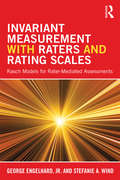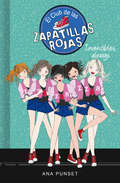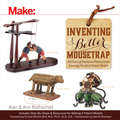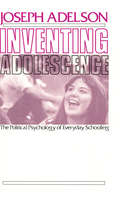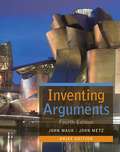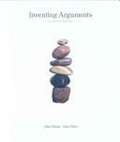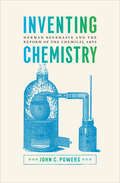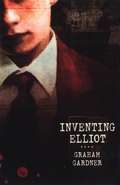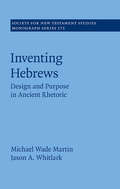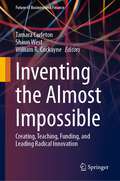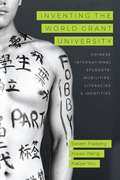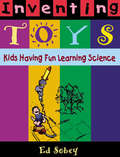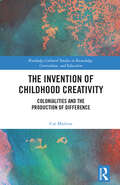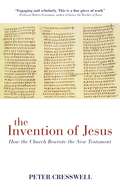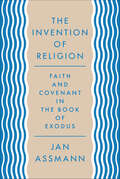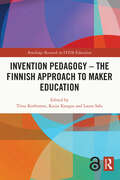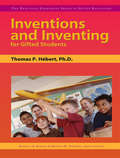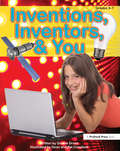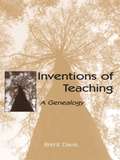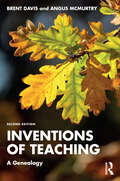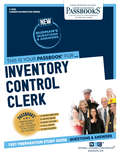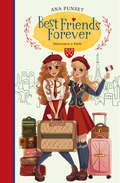- Table View
- List View
Invariant Measurement with Raters and Rating Scales: Rasch Models for Rater-Mediated Assessments
by George Engelhard Jr. Stefanie WindThe purpose of this book is to present methods for developing, evaluating and maintaining rater-mediated assessment systems. Rater-mediated assessments involve ratings that are assigned by raters to persons responding to constructed-response items (e.g., written essays and teacher portfolios) and other types of performance assessments. This book addresses the following topics: (1) introduction to the principles of invariant measurement, (2) application of the principles of invariant measurement to rater-mediated assessments, (3) description of the lens model for rater judgments, (4) integration of principles of invariant measurement with the lens model of cognitive processes of raters, (5) illustration of substantive and psychometric issues related to rater-mediated assessments in terms of validity, reliability, and fairness, and (6) discussion of theoretical and practical issues related to rater-mediated assessment systems. Invariant measurement is fast becoming the dominant paradigm for assessment systems around the world, and this book provides an invaluable resource for graduate students, measurement practitioners, substantive theorists in the human sciences, and other individuals interested in invariant measurement when judgments are obtained with rating scales.
Invasion of the Body: Revolutions in Surgery
by Nicholas L. TilneyIn 1913, the Peter Bent Brigham Hospital in Boston admitted its first patient, Mary Agnes Turner, who suffered from varicose veins in her legs. The surgical treatment she received, under ether anesthesia, was the most advanced available at the time. At the same hospital fifty years later, Nicholas Tilney—then a second-year resident—assisted in the repair of a large aortic aneurysm. The cutting-edge diagnostic tools he used to evaluate the patient’s condition would soon be eclipsed by yet more sophisticated apparatus, including minimally invasive approaches and state-of-the-art imaging technology, which Tilney would draw on in pioneering organ transplant surgery and becoming one of its most distinguished practitioners. In Invasion of the Body, Tilney tells the story of modern surgery and the revolutions that have transformed the field: anesthesia, prevention of infection, professional standards of competency, pharmaceutical advances, and the present turmoil in medical education and health care reform. Tilney uses as his stage the famous Boston teaching hospital where he completed his residency and went on to practice (now called Brigham and Women's). His cast of characters includes clinicians, support staff, trainees, patients, families, and various applied scientists who push the revolutions forward. While lauding the innovations that have brought surgeons' capabilities to heights undreamed of even a few decades ago, Tilney also previews a challenging future, as new capacities to prolong life and restore health run headlong into unsustainable costs. The authoritative voice he brings to the ancient tradition of surgical invasion will be welcomed by patients, practitioners, and policymakers alike.
Invencibles, always (Serie El Club de las Zapatillas Rojas #Volumen 16)
by Ana Punset¡No te pierdas esta nueva aventura de las chicas de #ElClubDeLasZapatillasRojas! Celia ha decidido dejar su grupo de fotografía, pero sus antiguas compañeras no paran de dejarle comentarios en su cuenta de Instagram... ¡y no precisamente positivos! ¿Por qué tienen que comportarse así? Por suerte, sus amigas la están apoyando más que nunca. No hay ninguna duda: si están unidas, ¡son invencibles, always!
Inventing a Better Mousetrap: 200 Years of American History in the Amazing World of Patent Models
by Alan Rothschild Ann RothschildLearn about the role that patent models played in American history--and even learn to build your own replica!Patent models, working models required for US patent filings from 1790 to 1880, offer insight into--and inspiration from--a period of intense technological advancement, the Industrial Revolution. The Rothschild Patent Model Collection consists of thousands of patent models, many from the 19th century. This book features the most outstanding of these patent models, and offers deep insight into the cultural, economic, and political history of the United States.This book not only catalogs hundreds of the most compelling models from the collection, but shows you how to build your own replicas of several selected models using Lego, 3D printing, and other materials and techniques.
Inventing Adolescence: The Political Psychology of Everyday Schooling
by Joseph AdelsonThere is a widespread and deep awareness that all is not well with American public education nor with the students, educators, and administrators who are charged with making citizens literate. Joseph Adelson's work has gained considerable prominence in this ongoing reevaluation. Writing with force, verve, and the tools of advanced study, Adelson's book provides what might be the most comprehensive look at American education since the work of Diane Ravitch. The materials include revised and updated versions of essays that caused a real stir when they first appeared in the pages of Commentary, Daedalus, The American Scholar, and The Public Interest, among other places.The work goes against the grain of rhetoric but quite with the grain of the best in social science: That the erosion of trust in the American young has been far less severe than in the American old, that the degree of pathology, alienation, and rebelliousness in the American adolescent population is far from alarming. On the whole, each and every serious research study shows the vast majority of teenagers to be competent, purposeful, at ease with themselves, and closely bonded to their families and their values. This is, however, no pollyannish version of American education, but a tough-minded critique of educators and administrators who prefer ideological generalities to empirical truths, and whose vested interests are not in the requirements of learning, but ultimately in its subversion. The invention of adolescence was a search for a problem child more nearly detected in problematic adults.
Inventing Arguments: Brief 4th Edition
by John Mauk John MetzOrganized around common rhetorical situations that occur all around us, INVENTING ARGUMENTS shows you that argument is a living process rather than a form to be modeled. Through the text's prominent focus on invention, you will learn to recognize the rhetorical elements of any argumentative situation and apply the tools of argument effectively in your own writing. The basic layers of argument are introduced in early chapters, with material arranged into increasingly sophisticated topics beginning with the most obvious or explicit layers (claims) and moving to more implied or "hidden" layers (assumptions, values, beliefs, ideology). By the time you finish Part 1, you will have a thorough understanding of argument, which you can then apply not just to the invention projects but also to your writing for other college courses and beyond.
Inventing Arguments (Second Edition)
by John Mauk John MetzThe text's prominent focus on invention teaches students to recognize the rhetorical elements of any argumentative situation and apply the tools of argument effectively in their own writing.
Inventing Chemistry: Herman Boerhaave and the Reform of the Chemical Arts (Synthesis)
by John C. PowersThe story of this little-known Dutch physician &“will interest students and practitioners of history, chemistry, and philosophy of science&” (Choice). In Inventing Chemistry, historian John C. Powers turns his attention to Herman Boerhaave (1668–1738), a Dutch medical and chemical professor whose work reached a wide, educated audience and became the template for chemical knowledge in the eighteenth century. The primary focus of this study is Boerhaave&’s educational philosophy, and Powers traces its development from Boerhaave&’s early days as a student in Leiden through his publication of the Elementa chemiae in 1732. Powers reveals how Boerhaave restructured and reinterpreted various practices from diverse chemical traditions (including craft chemistry, Paracelsian medical chemistry, and alchemy), shaping them into a chemical course that conformed to the pedagogical and philosophical norms of Leiden University&’s medical faculty. In doing so, Boerhaave gave his chemistry a coherent organizational structure and philosophical foundation, and thus transformed an artisanal practice into an academic discipline. Inventing Chemistry is essential reading for historians of chemistry, medicine, and academic life.
Inventing Elliot
by Graham GardnerElliot, a victim of bullying, invents a calmer, cooler self when he changes schools in the middle of freshman year, but soon attracts the wrong kind of attention from the guardians who "maintain order" at the new school.
Inventing Hebrews: Design and Purpose in Ancient Rhetoric (Society for New Testament Studies Monograph Series #171)
by Michael Wade Martin Jason A. WhitlarkInventing Hebrews examines a perennial topic in the study of the Letter to the Hebrews, its structure and purpose. Michael Wade Martin and Jason A. Whitlark undertake at thorough synthesis of the ancient theory of invention and arrangement, providing a new account of Hebrews' design. The key to the speech's outline, the authors argue, is in its use of 'disjointed' arrangement, a template ubiquitous in antiquity but little discussed in modern biblical studies. This method of arrangement accounts for the long-observed pattern of alternating epideictic and deliberative units in Hebrews as blocks of narratio and argumentatiorespectively. Thus the 'letter' may be seen as a conventional speech arranged according to the expectations of ancient rhetoric (exordium, narratio, argumentatio, peroratio), with epideictic comparisons of old and new covenant representatives (narratio) repeatedly enlisted in amplification of what may be viewed as the central argument of the speech (argumentatio), the recurring deliberative summons for perseverance. Resolving a long-standing conundrum, this volume offers a hermeneutical tool necessary for interpreting Hebrews, as well as countless other speeches from Greco-Roman antiquity.
Inventing Hell
by Jon M. SweeneyHell: The word means terror, darkness, and eternal separation from God. Some people think the Bible is clear about hell, but what if they're mistaken? With gripping narrative and solid scholarship, Sweeney charts hell's "evolution" from the Old Testament underworld Sheol, through history and literature, to the greatest influencer of all: Dante's Inferno. He reveals how the modern idea of hell is based mostly on Dante's imaginative genius-but in the process, he offers a more constructive understanding of the afterlife than ever before. Disturbing and enthralling, Sweeney will forever alter what we think happens to us after we die-and more importantly, he will make us reconsider how we live. Bible really says about heaven and hell, giving us a clearer, more hopeful understanding of the afterlife than ever before.
Inventing the Almost Impossible: Creating, Teaching, Funding, and Leading Radical Innovation (Future of Business and Finance)
by Tamara Carleton Shaun West William R. CockayneLooking to pioneer scientific and technological breakthroughs that create entirely new industries? This book serves as your guide. It goes beyond patents, diving deep into the intersection of foresight, engineering, and business. Explore how teams at renowned organizations such as ARPA-E, IKEA, and H2 Green Steel create radical innovation. Through critical analysis, industry case studies, and teaching examples, an international and interdisciplinary group of scholars, practitioners, and mavericks offer practical advice for bringing visionary development to life. Whether you're seeking to invent the seemingly impossible or solve problems for which no market exists yet, this book renews the research agenda for the deliberate study of invention. It will inspire and provoke you to expand your thinking and push boundaries.
Inventing the World Grant University: Chinese International Students’ Mobilities, Literacies, and Identities
by Steven Fraiberg Xiqiao Wang Xiaoye YouThrough an exploration of the literacy practices of undergraduate Chinese international students in the United States and China, Inventing the World Grant University demonstrates the ways in which literacies, mobilities, and transnational identities are constructed and enacted across institutional and geographic borders. Steven Fraiberg, Xiqiao Wang, and Xiaoye You develop a mobile literacies framework for studying undergraduate Chinese international students enrolling at Western institutions, whose numbers have increased in recent years. Focusing on the literacy practices of these students at Michigan State University and at Sinoway International Education Summer School in China, Fraiberg, Wang, and You draw on a range of mobile methods to map the travel of languages, identities, ideologies, pedagogies, literacies, and underground economies across continents. Case studies of administrators’, teachers’, and students’ everyday literacy practices provide insight into the material and social structures shaping and shaped by a globalizing educational landscape. Advocating an expansion of focus from translingualism to transliteracy and from single-site analyses to multi-site approaches, this volume situates local classroom practices in the context of the world grant university. Inventing the World Grant University contributes to scholarship in mobility, literacy, spatial theory, transnationalism, and disciplinary enculturation. It further offers insight into the opportunities and challenges of enacting culturally relevant pedagogies.
Inventing Toys: Kids Having Fun Learning Science
by Ed SobeyAn intriguing combination of invention and toy making, this guide encourages students to work in teams to design and fabricate working toys while learning the fundamentals of science, design, tool usage, and the creative process. Toys range from cars to electric fans to rockets, and the trial-and-error process that students use to build these toys allows them to refine their models through experimentation--building, conducting tests, collecting and interpreting data, and making changes or improvements to their inventions. There are directions for seven workshops and suggestions for five more, and the science concepts and historical background involved in each project are explained for teachers.
The Invention of Childhood Creativity: Colonialities and the Production of Difference (Routledge Cultural Studies in Knowledge, Curriculum, and Education)
by Cat MartinsThis text offers a comprehensive analysis of the concept of the modern creative and imaginative child in Western education. Drawing on archived sources and historical works, it reframes childhood creativity as a social, cultural, and scientific construction, asking how our thinking and acting toward the creative child have been produced historically. The text dissects the discursive construction of creativity as a natural and developmental attribute of the child. It argues that the idea of the White creative child, constructed through comparative reasoning, shaped by primitivism, and illustrated through botanical metaphors as close to nature and the senses, is a notion embedded with colonialities, forming part of a Western civilizing project and entrenched power-knowledge relations. A compelling and original account of childhood creativity, this text will appeal to researchers in arts education, early childhood education, curriculum studies, and the history of education.
The Invention of Jesus
by Peter CresswellThe Invention of Jesus is a pivotal, ground-breaking work, arguably one of the most important ever written in the field of New Testament textual analysis, and one that should direct scholastic endeavour for years to come. The author has developed some new techniques and taken an indepth look at the earliest surviving manuscripts of the gospels describing the life and death of Jesus as well as letters, attributed to Paul and others, to the outposts of the early Church. There are papyrus fragments, some from as early as the second century, and then later manuscripts written on parchment, with fewer gaps in the text. The vast majority are written in Greek - the language of Empire and of the early Church. Cresswell carefully analyses the surviving texts to show how doctrines, such as the divinity of Jesus and the Resurrection, have been progressively introduced into the narrative. By establishing what has been added, he defines what part of the character of Jesus the Christian Church has, over time, invented. He provides a solution to a highly unusual and hitherto baffling pattern of scribal cooperation in the New Testament of Codex Sinaiticus. Clues within the manuscript show that sheets by a second scribe could not have been generated to correct mistakes, as others have since contended. These must have been written in a division of labour, whose purpose was to introduce doctrinally motivated changes to the text. In resolving these puzzles, the author reveals something of the struggle that took place in the scriptorium, as the early Church manipulated the text to impose its message.
The Invention of Religion: Faith and Covenant in the Book of Exodus
by Jan AssmannA groundbreaking account of how the Book of Exodus shaped fundamental aspects of Judaism, Christianity, and IslamThe Book of Exodus may be the most consequential story ever told. But its spectacular moments of heaven-sent plagues and parting seas overshadow its true significance, says Jan Assmann, a leading historian of ancient religion. The story of Moses guiding the enslaved children of Israel out of captivity to become God's chosen people is the foundation of an entirely new idea of religion, one that lives on today in many of the world's faiths. The Invention of Religion sheds new light on ancient scriptures to show how Exodus has shaped fundamental understandings of monotheistic practice and belief.Assmann delves into the enduring mythic power of the Exodus narrative, examining the text's compositional history and calling attention to distinctive motifs and dichotomies: enslavement and redemption; belief and doubt; proper worship and idolatry; loyalty and betrayal. Revelation is a central theme--the revelation of God's power in miracles, of God's presence in the burning bush, and of God's chosen dwelling among the Israelites in the vision of the tabernacle. Above all, it is God's covenant with Israel—the binding obligation of the Israelites to acknowledge God as their redeemer and obey His law—that is Exodus's most encompassing and transformative idea, one that challenged basic assumptions about humankind's relationship to the divine in the ancient world.The Invention of Religion is a powerful account of how ideas of faith, revelation, and covenant, first introduced in Exodus, shaped Judaism and were later adopted by Christianity and Islam to form the bedrock of the world's Abrahamic religions.
The Invention of the Secondary Curriculum
by John WhiteAcross much of the world there is now a standard secondary school curriculum based on a traditional array of subjects. This is the first work to tell the story of its invention, from the sixteenth century until the present day. The book concludes with a sketch of an alternative: a curriculum based on a well-argued set of fundamental aims.
Invention Pedagogy – The Finnish Approach to Maker Education (Routledge Research in STEM Education)
by Tiina Korhonen Kaiju Kangas Laura SaloThis collection, edited and written by the leading scholars and experts of innovation and maker education in Finland, introduces invention pedagogy, a research-based Finnish approach for teaching and learning through multidisciplinary, creative design and making processes in formal school settings. The book outlines the background of, and need for, invention pedagogy, providing various perspectives for designing and orchestrating the invention process while discusses what can be learnt and how learning happens through inventing. In addition, the book introduces the transformative, school-level innovator agency needed for developing whole schools as innovative communities. Featuring informative case study examples, the volume explores the theoretical, pedagogical, and methodological implications for the research and practice of invention pedagogy in order to further the field and bring new perspectives, providing a new vision for schools for decades to come. Intermixing the results of cutting-edge research and best practice within STEAM-education and invention pedagogy, this book will be essential reading for researchers, students, and scholars of design and technology education, STEM education, teacher education, and learning sciences more broadly.
Inventions and Inventing for Gifted Students
by Thomas P. Hébert Kristen Stephens Frances KarnesInventing involves creativity applied to a problem-solving process, which can be taught. Through teaching instructional units on inventing, multiple creative skills are infused into one unit. Teachers who provide their students with such instruction see inventions as a natural way of packaging creativity training in an authentic and meaningful way. Applying creative thinking skills and a knowledge of a field of study to create exciting inventions is at the heart of the inventing process. This guide offers a practical introduction to the inventing process: getting students interesting in inventing, teaching the inventing process, patenting new product ideas, participating in inventions conventions and competitions, and an extensive listing of print and Web-based resources. This is one of the books in Prufrock Press' popular Practical Strategies Series in Gifted Education. This series offers a unique collection of tightly focused books that provide a concise, practical introduction to important topics concerning the education of gifted children. The guides offer a perfect beginner's introduction to key information about gifted and talented education.
Inventions, Inventors, & You: Grades 3-7
by Dianne DrazeInventions, Inventors, and You is a comprehensive unit that will not only acquaint students with significant inventions and inventors, but will also give them techniques for being more creative. Inventions, Inventors, and You takes invention out of the history books and brings it to life.This combination of research and creativity training allows students to explore how our lives have been affected by inventions while they build their own creative skills. Inventions, Inventors, and You offers something for every teaching and learning style. The teacher's section gives outlines for directed lessons, warm up ideas and guidelines for learning centers and bulletin boards, as well as pretest and invention reference lists. The student section includes reproducible worksheets that explore inventions, inventors, the inventive process, and 27 project ideas. These activities take your class through the entire inventive process with many opportunities for side trips. Use for a unit on creative thinking or on the history and social impact of inventions or to enhance the study of famous inventors.From a youngster's playful attempts to use objects in new ways, to the adult's efforts to solve everyday problems, we see the inventive mind analyzing at all times. If you're planning an invention convention, put this book on your must-have list!Grades 3-7
Inventions of Teaching: A Genealogy
by Brent DavisInventions of Teaching: A Genealogy is a powerful examination of current metaphors for and synonyms of teaching. It offers an account of the varied and conflicting influences and conceptual commitments that have contributed to contemporary vocabularies--and that are in some ways maintained by those vocabularies, in spite of inconsistencies and incompatibilities among popular terms. The concern that frames the book is how speakers of English invented (in the original sense of the word, "came upon") our current vocabularies for teaching. Conceptually, this book is unique in the educational literature. As a whole, it presents an overview of the major underlying philosophical and ideological concepts and traditions related to knowledge, learning, and teaching in the Western world, concisely introducing readers to the central historical and contemporary discourses that shape current discussions and beliefs in the field. Because the organization of historical, philosophical, theoretical, and etymological information is around key conceptual divergences in Western thought rather than any sort of chronology, this text is not a linear history, but several histories--or, more precisely, it is a genealogy. Specifically, it is developed around breaks in opinion that gave or are giving rise to diverse interpretations of knowledge, learning, and teaching--highlighting historical moments in which vibrant new figurative understandings of teaching emerged and moments at which they froze into literalness. The book is composed of two sorts of chapters, "branching" and "teaching." Branching chapters include an opening treatment of the break in opinion, separate discussions of each branch, and a summary of the common assumptions and shared histories of the two branches. Teaching chapters offer brief etymological histories and some of the practical implications of the terms for teaching that were coined, co-opted, or redefined within the various traditions. Inventions of Teaching: A Genealogy is an essential text for senior undergraduate and graduate courses in curriculum studies and foundations of teaching and is highly relevant as well for students, faculty, and researchers across the field of education.
Inventions of Teaching: A Genealogy
by Brent Davis Angus McMurtryThis updated edition of Inventions of Teaching: A Genealogy presents an examination of the many and varied metaphors of teaching in English. These metaphors serve as sites to excavate conflicting historical, con-ceptual, and philosophical influences that have contributed to modern teaching practices.Though the Eurocentric perspectives of the first edition remain a focus, they are placed in a broader context that acknowledges their, as the authors coin it, ‘WEIRDness’ (i.e., western, educated, industrialized, rich, democratic nature). In this revised and expanded edition, these perspectives are accompanied by multiple case studies of non-Western and Indigenous educational traditions. Chapter discussions are organized as a genealogy around key conceptual bifurcations in thought rather than case-by-case analysis or a chronology. This structure allows the authors to examine the origins of distinctions that are often taken for granted, such as cognitivism vs. behaviorism, or constructivism vs. positivism. The genealogy develops around breaks in opinion that gave or are giving rise to diverse interpretations of knowledge, learning, and teaching--highlighting historical moments in which vibrant new figurative understandings of teaching emerged. A new chapter has been added, addressing the habits of interpretation needed to render the ‘WEIRD’ world sensible; alongside a much elaborated closing discussion, intended to bring WEIRD inventions of teaching into sharper relief by contrasting them with non-WEIRD cultures and some of their approaches to teaching.Inventions of Teaching: A Genealogy is an informative text for senior undergraduate and graduate courses in curriculum studies and foundations of teaching, It is also relevant for students, faculty, and researchers across the field of education who want to explore the consequences of diversities of opinion, belief, and practice concerning teaching and closely related topics of learning, knowing and formal education.
Inventory Control Clerk: Passbooks Study Guide (Career Examination Series #C-2616)
by National Learning CorporationThe Inventory Control Clerk Passbook® prepares you for your test by allowing you to take practice exams in the subjects you need to study. It provides hundreds of questions and answers in the areas that will likely be covered on your upcoming exam.
Invercanvi a París (Best Friends Forever #Volumen 3)
by Ana PunsetUna bona amiga coneix totes les teves històries. La teva millor amiga les viu amb tu. La Júlia i l'Alexandra han demostrat que si estan unides poden amb tot, i ara tenen l'oportunitat de gaudir juntes de París! Però l'intercanvi amb una escola d'elit posa a prova la confiança en elles mateixes... i també la seva amistat. És el moment de demostrar que sempre es tindran l'una a l'altra, perquè passi el que passi són... Best Friends Forever
